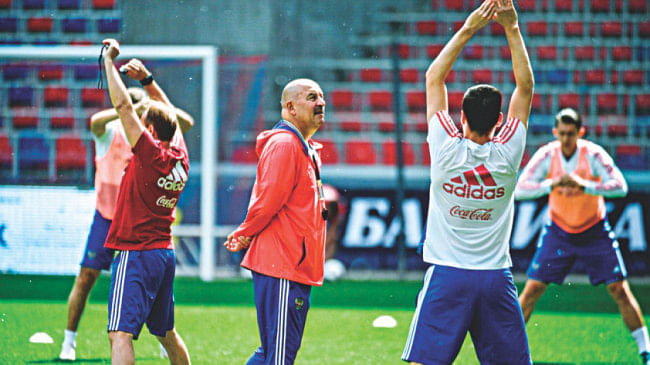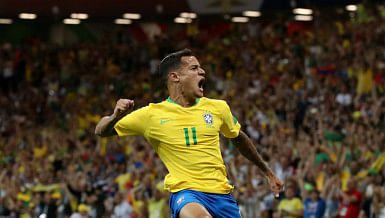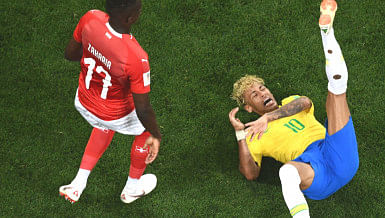Elite footballers face ever-increasing physical and mental demands, with a long, gruelling seasons. In a World Cup year, how does a player make it to June fit and fired up?
It is actually quite difficult, the experts say, and requires an army of dedicated specialists tracking and carefully engineering each athlete's mental and physical condition. Research shows that the beautiful game has become faster and more intense, requiring players to be fleeter of foot and of mind, raising stress levels and the risk of serious injury.
But there is little time for rest and recuperation. Every four years, teams enter the world's most popular sporting extravaganza having just completed major competitions: the UEFA Champions League finished less than three weeks before the World Cup opens in Russia on June 14.
"There is no real regard for the demands of international football within clubs," said John Brewer, a professor of applied sport science at St Mary's University in London, who helped prepare England for the 1990 World Cup. "They [clubs] want their players at 100 per cent until the last game, and it doesn't matter if there's a World Cup afterwards."
What to do? Trainers rely on high-tech to keep tabs on their athletes.
GPS is used to track their every move in training sessions and matches, measuring changes in running or acceleration speed while monitors track their heart rate.
Players returning to the home team after training or playing away complete questionnaires on diet, sleeping patterns, and any aches or pains, "which help detect problems that are not necessarily visible," said Stephane Caterina, a French physical trainer specialised in football.
And then, a few weeks before a World Cup, the athletes are assessed for battle readiness and put through their final preparatory paces -- "catered to each individual player," according to Caterina.
But they are not to be left completely static. They do low-intensity, "fun" exercises such as forest bike rides or mountain hikes before resuming their classical training a week or two before the first match.
The aim, of course, is to have players in tip-top shape and resistant to injury. But it is a tough balance, and sometimes things go wrong in the lead-up to a World Cup.
France has not forgotten the trauma of Zinedine Zidane tearing a thigh muscle in a warm-up game five days before the opening of the 2002 World Cup, a setback blamed in part for the nation's poor showing.
A similar fate has now befallen Egypt, with star striker Mohamed Salah injuring a shoulder while playing for Liverpool in the Champion's League final on May 26.
A 2013 study in the Journal of Science and Medicine and Sport said the physical demands of football have skyrocketed since 1966, when the eighth World Cup was held.
The game speed increased by 15 per cent to 2010, and the passing rate by 35 per cent, according to the analysis of World Cup final games.
While the added intensity produces much excitement for fans, it comes at the risk of "an increased probability of injuries through high-speed collisions," the authors said.
Mental toughness, say the experts, is another thing every good player must have.
"Athletes who feel that they can cope with the demands of the competition view it as a challenge and are more likely to produce their best performances," Lee Moore, a lecturer in sport psychology at the University of Bath told AFP.




 For all latest news, follow The Daily Star's Google News channel.
For all latest news, follow The Daily Star's Google News channel. 









Leave your comments